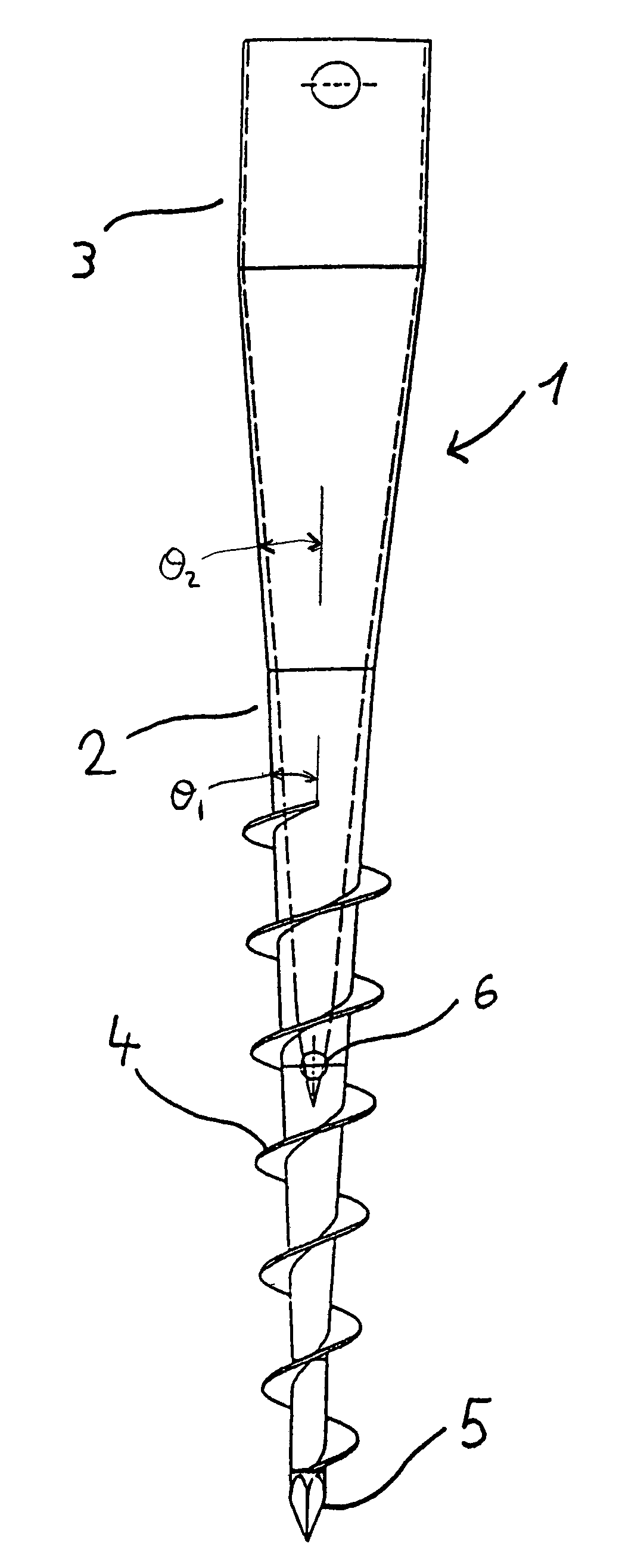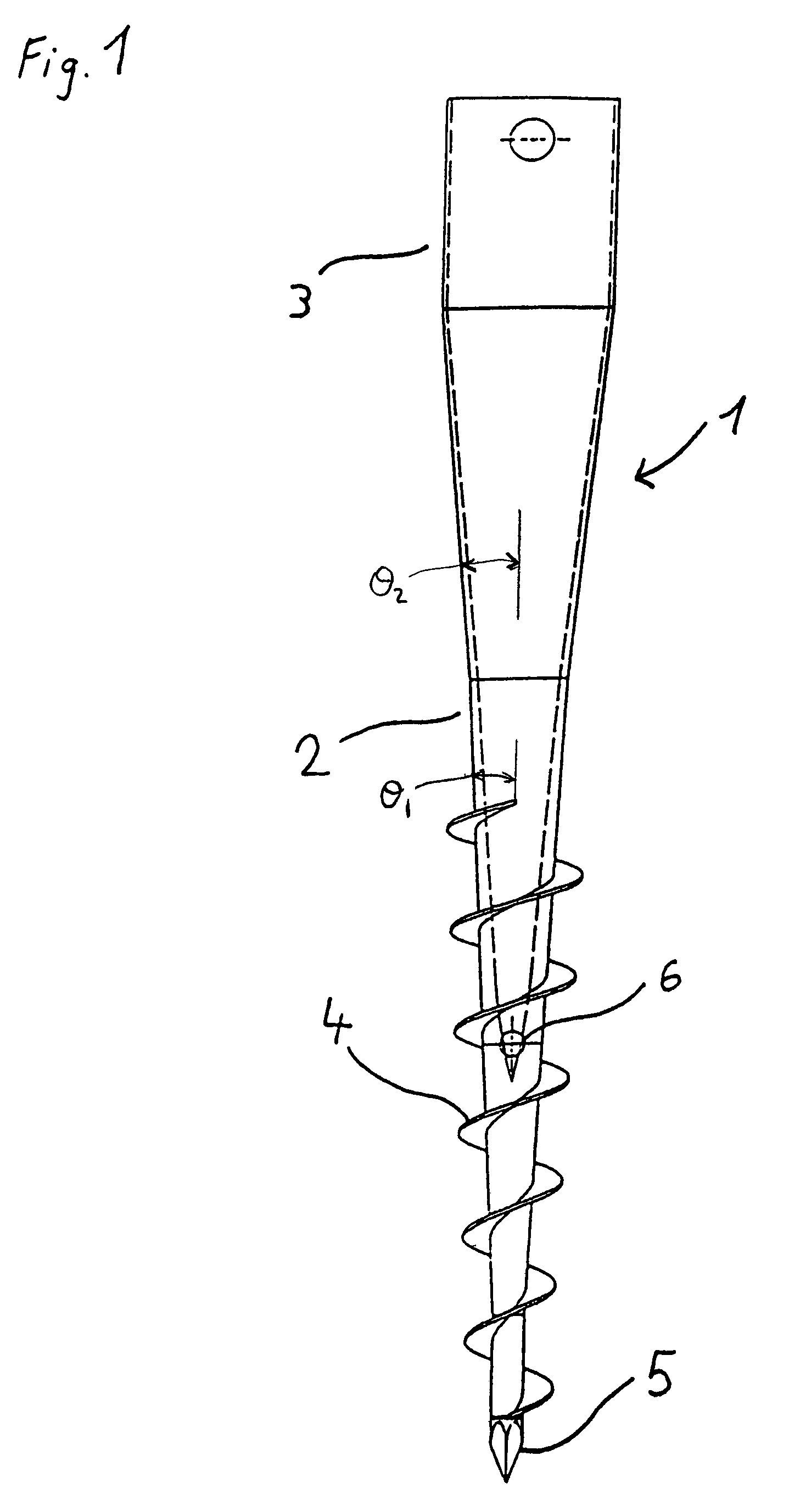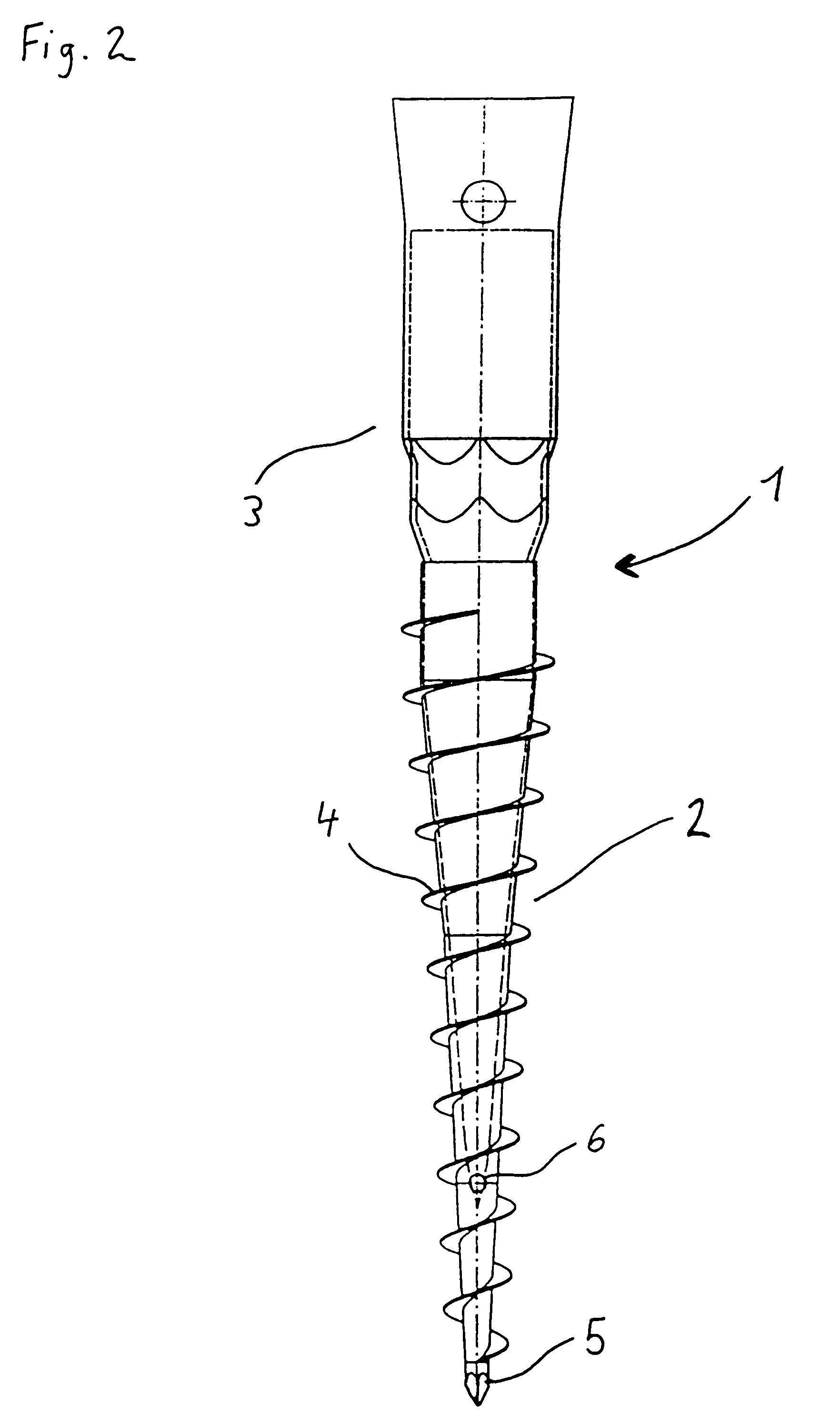Device for fastening poles, posts, masts or the like in the ground, and method for manufacturing a fastening device
- Summary
- Abstract
- Description
- Claims
- Application Information
AI Technical Summary
Benefits of technology
Problems solved by technology
Method used
Image
Examples
Embodiment Construction
[0043]FIGS. 1 and 2 show two preferred embodiments of the fastening device according to the present invention with a thread for screwing into the ground and out of it again. All details relating to these two figures, with the exception of those which concern the thread, can also apply for the fastening devices according to the present invention without a thread for driving into the ground.
[0044]FIG. 1 shows a first preferred embodiment of the fastening device according to the present invention with a thread.
[0045]The fastening device has a basic body 1 with an anchoring portion 2 and a holding portion 3, the anchoring portion 2 and the holding portion 3 being formed in one piece. The anchoring portion 2 is designed as an essentially acute-angled displacement body and is divided into two part portions of different conicity. The first cone-shaped part portion in the screwing-in direction having a more acute cone angle θ1 than the cone angle θ2 of the second conical part portion in the...
PUM
 Login to View More
Login to View More Abstract
Description
Claims
Application Information
 Login to View More
Login to View More - R&D
- Intellectual Property
- Life Sciences
- Materials
- Tech Scout
- Unparalleled Data Quality
- Higher Quality Content
- 60% Fewer Hallucinations
Browse by: Latest US Patents, China's latest patents, Technical Efficacy Thesaurus, Application Domain, Technology Topic, Popular Technical Reports.
© 2025 PatSnap. All rights reserved.Legal|Privacy policy|Modern Slavery Act Transparency Statement|Sitemap|About US| Contact US: help@patsnap.com



